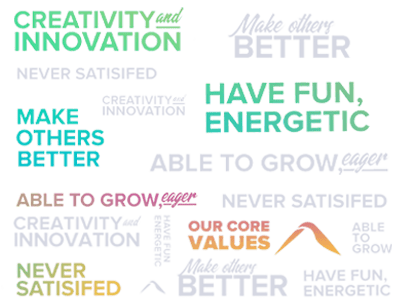Introduction
Today, every interaction with the customer is important as customer service has become a vital part of business. When handled properly, a frustrated customer can become a brand advocate; if handled incorrectly, they can easily switch to a competitor. In such a scenario, quality monitoring has become a strength of CX excellence. Additionally, it is crucial to implement quality monitoring strategies to ensure that customer expectations are consistently met. This article will discuss 8 quality monitoring strategies for improving CX and loyalty.
In 2024 the The global contact centre software market size was valued at USD 52.17 billion. The sector is growing at a CAGR of 18.8% and is anticipated to reach 213.54 billion by 2032[i].
Transform Your Customer Experiences: 8 Loyalty-Boosting Quality Monitoring Strategies
Having customers who are loyal to your business is essential for success. However, for establishing long-term loyalty, delivering exceptional customer experiences is essential. 8 quality monitoring strategies that can help maximize customer loyalty and create positive experiences will be offered in this blog.
1. Regular Quality Assessments to Improve CX
Constructive insights about the operation of the contact centre are obtained by Quality assessments. Areas of improvement can be identified by the contact centres by systematically evaluating customer service standards. This evaluation can assist in taking necessary actions to ensure the required standards are met in customer service. This enhances customer experience and the same time increases customer loyalty.
It’s not just enough to assess a few channels, a regular evaluation of all channels helps in recognising the sections that require attention. Performance can be measured through surveys, data analysis, and customer feedback. This will help in comprehending customer expectations, gauging performance and implementing improvements. Also, customer service can be further improved by training staff on customer service technologies and efficiently handling customer inquiries.
2. Use Mystery Shopping for Unbiased Feedback
Contact centres can achieve an unbiased, third-party viewpoint of customers about their service using Mystery shopping. Mystery shopping can present a clear picture of how customers perceive their brand and their experience with the staff. This opens opportunities for improvement and attention to required areas.
As per the data mentioned in an article What Is Mystery Shopping? Behind the Scenes of 12 Million Secret Customer Experiences by Sonata Software– globally, every year, more than 2 million mystery shopping evaluations are carried out[i].
Furthermore, with this process, contact centres are also empowered to measure customer loyalty through gauging customer satisfaction. By getting an overview of the customer satisfaction, contact centres can comprehend the customer’s idea about being loyal and the need to enhance customer loyalty.
Additionally, Mystery shopping is also a way to determine employee performance. This method highlights if compliance and adherence to the script is maintained by the staffs or not, also if the best possible service is offered.
3. Superior Quality Monitoring Solutions Like NEQQO
Valuable and vital insights into customer interactions is delivered by advanced quality monitoring solution, like NEQQO.
Precise trends in customer behaviour patterns can be identified by contact centres with the use of analytics and reporting. These valuable insights can be used to optimise the functions. This empowers the contact centres to actively focus on customer’s requirements and deliver enhanced customer service.
4. Leverage Call Data Analysis for Deeper Insights
The terms Call data analysis means to collect and analyse interactions between customers and the company. This analysis comprises the duration of the calls, issue conferred, resolution and sentiment of the customer. The analysis provides data regarding customer experience and highlights areas of enhancements.
Analysing call data offers a key advantage that is identification of common customer issues and complaints. This result enables the company to take steps before an issue is escalated. For an instance, if customers are repeatedly calling regarding a specific issue then an automated response can be generated, or agents can be prepared to handle the issue proactively.
5. Monitor Social Media to Capture Real-Time Sentiment
Social media provides an easy and efficient way for customers to share their experiences with a company’s products and services. By monitoring social media, call centres can gain valuable feedback from customers and use it to identify areas for improvement. For example, if customers are experiencing difficulty with a particular product or service, call centres can use this feedback to create more efficient processes to ensure customer satisfaction. This can help to build trust and loyalty with customers, as they know that their concerns are being addressed.
6. Establish CX Benchmarks to Track & Compare Performance
Benchmarks help organizations identify areas for improvement and track progress over time. They provide visibility into the customer experience, allowing call centre managers and staff to quickly identify issues and make necessary adjustments. Additionally, benchmarks provide companies with a way to measure and compare performance against industry and customer expectations.
When creating benchmarks for call centres, managers should consider the following factors:
- Response times: How quickly are agents responding to customer inquiries?
- Resolution rates: Are customers receiving resolutions to their inquiries in a timely manner?
- Customer satisfaction: Are customers satisfied with the level of service they receive?
- Hold times: Are customers waiting too long on hold?
- Agent performance: Are agents providing customers with accurate and helpful information?
By establishing benchmarks for these performance metrics, call centres can ensure that customers receive a high level of service. This helps to increase customer satisfaction, which leads to increased loyalty and retention.
In addition to improving performance metrics, benchmarks can also help call centres determine the cost-effectiveness of their operations. By tracking and comparing labor costs to customer service, companies can determine areas where they can reduce costs while still providing a quality customer experience.
7. Use Automated Analytics Tools for Continuous Feedback
Customer feedback is an invaluable tool for improving CX and loyalty, as it can provide direct insight into customers’ needs, preferences, and satisfaction levels. Automated analytics tools such as speech analytics software can help call centers collect customer feedback quickly and easily, enabling them to make informed decisions on how to improve CX.
They can also be used to identify customer service issues, such as long wait times, unsatisfactory customer service, or product issues. By collecting customer feedback and analysing it in real-time, call centres can quickly pinpoint areas for improvement and take immediate action to address them.
Additionally, automated measurement tools can help call centres measure the effectiveness of their CX efforts. By tracking customer feedback, customer service metrics, and customer satisfaction levels over time, call centres can gain a better understanding of how their customer experience efforts are performing. This information can then be used to make adjustments and further improve CX and loyalty.
8. Empower Teams Through Regular Internal Meetings
Team meetings can improve CX and loyalty by increasing employee engagement. When team members come together to discuss their successes and challenges, they become more invested in the call centre’s mission. Having an open dialogue about customer service issues can lead to a better understanding of customer needs and improved customer service. Team members can also brainstorm ideas for how to increase customer satisfaction.
Additionally, this can help create a sense of camaraderie among employees. This feeling of unity can help to build loyalty among team members, which in turn can lead to improved customer service. When employees feel like they are part of a team, they are more likely to go above and beyond to provide excellent customer service.
Furthermore, team meetings can help identify areas for improvement in customer service. By discussing customer service issues, team members can identify and address problems quickly. This can help to ensure that customers receive the best possible service, leading to increased loyalty.
Conclusion: Putting It All Together for Better Loyalty
The eight quality monitoring strategies discussed in this blog are a compact guideline for contact centres to enhance customer satisfaction and loyalty. Customer satisfaction can be measured and enhanced with Regular quality assessments and mystery shopping, whereas customers’ sentiments can be read and analysed by accessing call data and monitoring social media. Team’s performance can be comprehended by setting up benchmarks, utilizing automated tools, and organising regular team meetings. This also provides opportunities for modifications in the service and for establishing an ecosystem of constant improvement.
Unveiling Excellence – Elevating Retail Center Quality Beyond Metrics
Frequently Asked Questions on Quality Monitoring in Customer Experience
1. What is the relevance of quality monitoring in customer experience?
Quality monitoring confirms that each customer interaction complies with the brand benchmark. It helps identify knowledge gaps, improve agent attitude, and maintain consistent service quality, resulting in a seamless and enhanced customer experience.
2. Does quality monitoring play any role in improving customer loyalty?
Yes. A customer’s trust in a brand grows when issues are resolved efficiently and empathetic support is delivered consistently. Quality monitoring helps maintain a uniform experience, reducing churn and strengthening customer loyalty.
3. Which tools are generally deployed for quality monitoring?
Contact centres commonly use the following tools:
- Call recording and scoring tools
- Speech and text analytics
- Real-time monitoring dashboards
- Workforce optimization (WFO) platforms
4. What should be the frequency of monitoring interactions?
Ideally, quality monitoring should be continuous. With AI-powered QA, contact centres can assess 100% of interactions daily. In manual processes, QA teams typically evaluate a sample weekly or monthly. More frequent evaluations provide clearer insights and better results.
Sources :
Contact Centre Software Market Size, Share & Industry Analysis, By Component (Solution and Services), By Deployment (Cloud and On-Premise), By Enterprise Type (Small & Medium Enterprises and Large Enterprises), By Vertical (BFSI, ITES, IT and Telecom, Government, Healthcare, Consumer Goods & Retail, Travel & Hospitality, Media & Entertainment, and Others), and Regional Forecast, 2025-2032
What Is Mystery Shopping? Behind the Scenes of 12 Million Secret Customer Experiences




